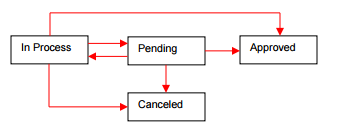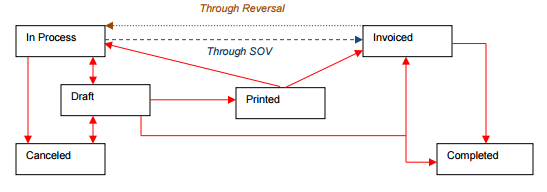Question:
What does it mean when a document is pending?
What does it mean when a document is published?
What is the difference between pending, published, closed and approved?
Answer:
The simplest answer is that while a document is Pending it becomes predominantly read-only. The concept is that the document is ready to be circulated (perhaps for approvals, as in “pending approval”). Conceptually, few users would have permission to revert a document from its pending state back to In Process to make further revisions.
It sometimes helps users understand the concept when thinking about “publishing” something. If you are using the Plan Room or are cloud syncing files, you likely only do so once the document reaches a point in its life cycle where this become appropriate. Once reaching the published milestone (a Pending status), it should take more thought and effort to make changes. Perhaps only a few users would be authorized.
Eventually, the document may be changed to Closed and become totally read-only. At this point further changes should be exceptionally rare. Even fewer uses are likely to have the required permission to override the protection on a closed document.
Status vs. State
sfPMS uses rules to map various statuses to states. You can have any number of statuses for each Doc type, but there are always only 4 states:
- In Process
- Pending/Published
- Approved*
- Closed*
*Closed and Approved modify each other: Closed and Approved is “completed”; Closed and not Approved is “canceled”
Be aware that the label on a status does not determine state. What matters is what statuses have been mapped to a Pending state through DocPending rules. For example, if your Sys Admin added a Pending status to a Doc type, but did not set up this status through a DocPending rule, that Pending status would (by default) map to the In Process state! On the other hand, your Sys Admin could have set up several statuses (Published, Committed, Almost Ready, etc.) to mean Pending (even for the same Doc type) by mapping them all through DocPending rules.
What Gets Protected
Some protections can be overridden by giving a user roles with certain capability. Ask you implementer. By default:
- For Pending documents, the Document Header, Details and Items are protected.
- For Closed documents, nearly everything gets protected, except routing.
What Can Change
A document can generally be routed at any time. Attachments can be added at any time by those with sufficient permission. Workflow scripts and save extensions can make changes that the end user does not have permission to make.
Doc Type Examples
The principles discussed here apply to every Doc type (as potentially modified by rules and security). This is true even if you do not normally think of pending/published as being applicable to a given Doc type. Contact your implementer to discuss workflow.
As shipped, you will notice the behavior applies very specifically to these Doc types:
- Bid Requests
- Budgets
- Change Orders (Owner and CCO)
- Commitments
- Payment Applications (SOV)
- Payment Requests
For example, the SOV Payment Application status flow can be quite involved:
See the Focus on Doc Types and Project Workflow guide for more examples like the one above
Additional Comments:
See these additional KBAs:
- KBA-01154: Overview of the DocTypeConfig Rules
- KBA-01391: Overview of the RouteConfig Rules
- KBA-01442: Overview of the Document Status Rule Groups
- KBA-01517: Overview of the NextDocFlow rules
KBA-01603; Last updated: October 12, 2016 at 8:14 am;
Keywords: none

